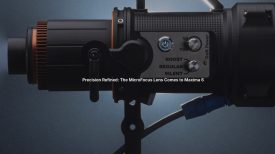By technical editor Matt Allard:
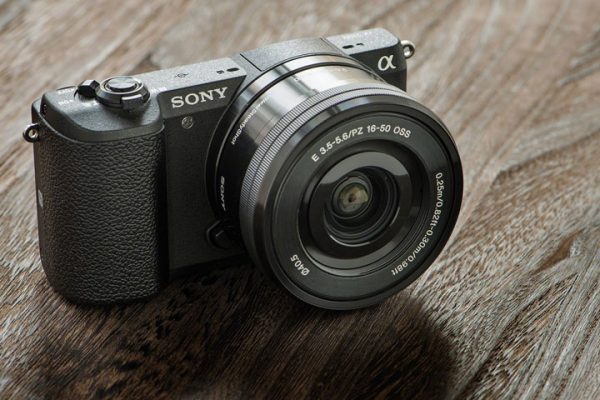
Some people would argue that good things come in small packages, but small-sized cameras have often been a compromise between quality and size. Welcome the new Alpha a5100 mirrorless camera, continuing Sony’s impressive recent run of putting high quality video recording into its mirrorless camera line-up. It takes most of the good stuff that was under the skin of the a6000 and puts it into the compact body from the NEX-5 line (the main loss being the EVF and the high burst rate for stills). It has the same 24.3MP APS-C sized sensor that features on-chip phase detection as the a6000, as well as the same 3″ LCD that flips up 180 degrees. For a $550 camera to be able to record the XAVC S codec, at 1080/60p/24p 50Mbps, is impressive.
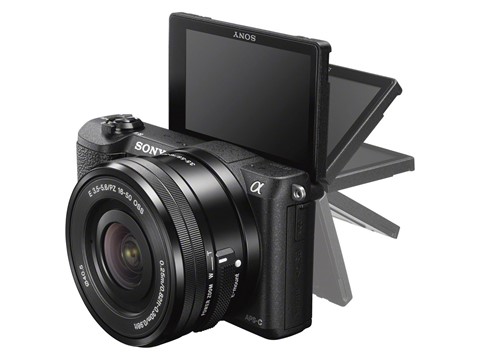
One of the things which should make it of interest to news, documentary and event shooters is its autofocus system. Yes – I said auto focus! Purists will argue that autofocus has no place in the video realm but I couldn’t disagree more. With the ever increasing push towards using gimbal technology, autofocus can make a big difference. For stills the a5100 uses a combination of focal plane phase detection and contrast detection. When you team these two up, Sony says you can accurately track subjects nearly throughout the whole frame. It also features a touch screen autofocus feature that lets you touch anywhere on the screen to get focus on your subject. In video mode the a5100 functions in continuous AF with the option to change to manual if needed – it isn’t clear yet if it uses the same hybrid system as stills shooting but it should nevertheless be at least of the speed of the a7S. How this autofocus technology will work in the real world for video needs to be tested.
As I mentioned earlier you can record in XAVC-S at 50 Mb/s or you can choose AVCHD if you prefer. If you want to record externally – say to a Atomos Ninja Star – the a5100 can output a clean HDMI signal at up to 1080 60p in 4.2.2 8-bit. Indeed Atomos CEO Jeromy Young sounded excited about the camera when we spoke to him. He told us “The tiny combination of Ninja Star and the Sony a5100 shows again that Atomos and Japanese camera makers are blazing a trail of quality sensors with post production recording at affordable prices – in fact under $1000 USD, you get HD Prores recording and even a MPEG backup recorded internally. The new series of Sony Alpha DSLM’s including the a7S are emerging as a new leader in video & still versatility for Pro’s, we are extremely pleased to partner with Sony to bring these amazing solutions to our mutual customers. The quality from the Super 35mm sensor direct to the Ninja Star in such a tiny combination make this the go two multi-cam camera or acts a perfect 2nd or 3rd camera with a larger main camera. It’s all about the quality of the sensor and as always Sony is leading the pack with other major Japanese makers and everyone else’s sensor images pale in comparison!”
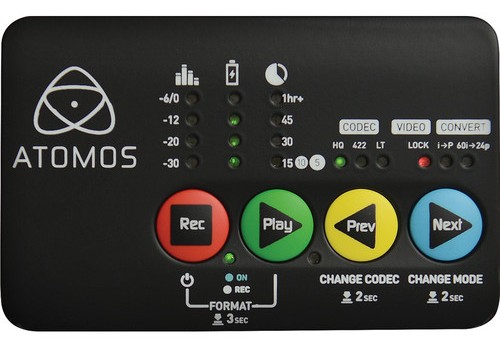
While it remains to be seen exactly how good the video image will be, I would be surprised if it is on par with the Sony a7S when it is in APS-C mode. The sensor has many more pixels and probably uses pixel binning to achieve the HD image – this is unlike the a7S which has a full pixel readout without pixel binning even in APS-C mode. This also means the pixels themselves are smaller and therefore the a5100 shouldn’t be as good as the a7S in low light at least. Still if it bests the A6000 then it will be very usable for many productions.
There a5100 does not have flat cinema picture profiles as are found in the a7S. It does however have Creative Style options which allows tuning of contrast, saturation and brightness to some degree. For many casual shooters this will be all they need.
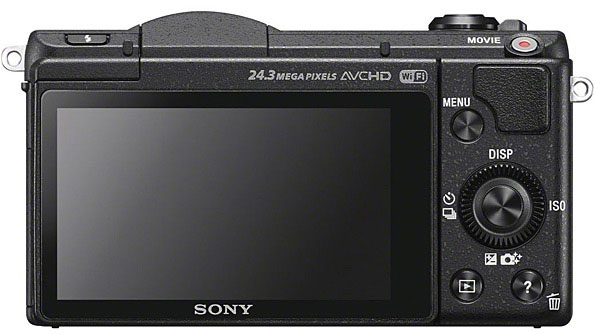
Sadly it appears just like its sister the a7S, the a5100 is only a World camera (ie capable of PAL and NTSC recording) if purchased in PAL regions – the NTSC model is not capable of PAL. I am also marginally concerned about whether there will be any overheating issues, given its small size. I am presuming that you will need to use fast similar SD cards to those in an a7S if you choose to record in XAVC-S.
While the video functions include peaking and zebras etc I think this camera is slightly let down by not having a headphone or microphone jack (athough headphone monitoring may be possible via a HDMI connected monitor, recorder or EVF). It also doesn’t feature a Sony Mi hot shoe adaptor, so you can’t use Sony’s external XLR adaptor solutions either.
With only a built-in microphone, if you want to record any serious audio, you will have to do it externally. Given the camera’s price point I don’t see the lack of audio and a headphone jack as a major deal breaker. For most serious users this will be a second or third camera to be used in a variety of places where a small-sized camera may be needed. If you’re just doing basic interviews for the web or academic projects this camera looks to tick a lot of boxes given its price. You could easily couple this with a Rode Smart Lav, record the audio to a smartphone and sync the audio up when you go to edit the material. For the budget user this would make for a fairly impressive set up.
Where I think this camera could come in very handy for pros is as a fixed camera that you could mount on top of a larger camera for a permanent wide shot in, say, a protest or fast moving situation. With a small pancake lens and a good autofocus system it could provide you with an important second angle. For Sony users who already have a FS700/100 or an a7S this camera gives you the ability to share lenses and memory cards across multiple cameras which makes a lot of sense. There are also those cases where you may be in very adverse weather conditions where you don’t want to risk your main camera getting damaged. Having a small camera with a good codec certainly gives you flexibility and options.
With the feature set of modern day cameras continuing to improve and the prices continually falling, there really are so many options out there at every price point. It is good to see Sony pushing a better codec into its lower end cameras. It is truly amazing to think that only a few years ago a camera that could record a broadcast quality codec for $550 was a pipe dream.



